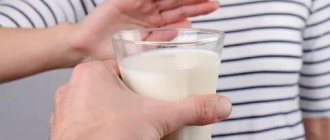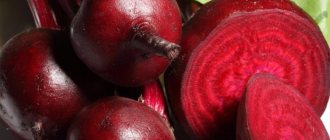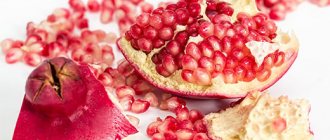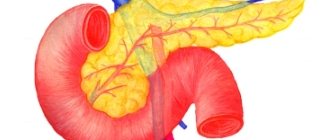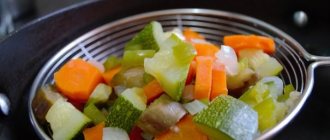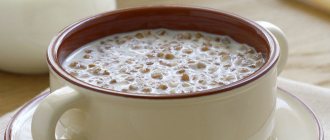Fermented milk products bring invaluable benefits to the body. It is a source of protein and calcium, which are essential for bones and muscles. Cottage cheese is recommended for many diseases, due to the fact that it is 100 percent absorbed by the body. Gastrointestinal diseases are no exception. Many patients ask gastroenterologists an exciting question: is it possible to eat cottage cheese with gastritis, and in what quantities.
Ulcers and gastritis can be cured with the help of a special diet that completely excludes the consumption of fried, salty, sour and spicy foods. These products negatively affect the health of the epigastric mucosa. Cottage cheese and all fermented milk are classified as sour dishes, but this circumstance does not prohibit their inclusion in the diet.
Can I have cottage cheese?
Cottage cheese is a fresh fermented milk product that is rich in calcium, copper, iron, zinc, fluorine and protein. These substances are necessary for organisms at any period of life, and especially during illness.
Doctors recommend consuming cottage cheese for people suffering from chronic gastritis. Modern stores offer different varieties: from extra fat (5–9% fat) to low fat (0–3%). For gastritis, you should prefer low-fat cottage cheese; it does not overload the digestive system.
There are certain subtleties in the issue of “gastritis and cottage cheese”. To choose the right menu, you need to establish the form and type of disease.
Compound
Cottage cheese consists of a large number of different components, the concentration of which greatly depends on the type of cottage cheese and its fat content.
Percentage and component composition:
- Water - from 64 to 70 percent;
- Proteins - from 14 to 18 percent;
- Fats (including saturated and monounsaturated) - from 0.1 to 18 percent;
- Carbohydrates (lactose and galactose) - from 1 to 1.5 percent;
- Ash - from 1 to 1.2 percent.
Cottage cheese also contains a number of minerals and vitamins:
- Vitamins: A, B1, B2, B4, B5, B6, B9, PP, C, E, B12, H beta-carotene;
- Minerals - sodium, potassium, calcium, magnesium, phosphorus, iron, copper, zinc, selenium, manganese, molybdenum and fluorine;
- Replaceable and essential amino acids - arginine, valine, histidine, isoleucine, leucine, lysine, methiodine, cysteine, threonine, tryptophan, phenylalanine, tyrosine, alanine, glycine, proline, serine, aspartic and glutamic acids.
For gastritis with high and low acidity
With gastritis with high acidity, there is an increased production of hydrochloric acid in the stomach, so all foods that have a sour taste are prohibited. The main purpose of the production of this acid is the breakdown of complex molecules, antibacterial processing of food, creating conditions for the absorption of iron elements and maintaining balance in the body. But everything is good in moderation. With increased acidity, the patient feels constant heartburn, it is caused by the release of gastric juice into the esophagus, belching - the release of accumulated gases, heaviness in the stomach, which leads to pain.
Cottage cheese dishes that are subject to heat treatment will help avoid excessive stimulation of gastric juice production. For light snacks, breakfasts or afternoon snacks with gastritis, you can prepare a pie or treat yourself to a cottage cheese casserole according to an individual recipe.
Fresh cottage cheese and dishes made from it are recommended to be consumed when the secretion of hydrochloric acid is reduced. This type of gastritis can occur as a result of poor eating habits, prolonged stress, or dysfunction of the thyroid gland. Unfortunately, the reasons that surround each of us lead to harmful consequences: a decrease in the bactericidal threshold, a decrease in the ability to digest complex protein foods. Proteins are the building blocks of the body. Therefore, eating cottage cheese in this case will help not only cope with discomfort, but also keep the body in good shape and avoid dystrophy.
It is better to turn the product into a curd mass - an unusual dessert is allowed for gastritis and will please you while following a strict diet - the soft, homogeneous consistency eliminates the presence of cottage cheese particles, which can cause stomach irritation.
Fermented milk products will help relieve constipation
To get rid of constipation, nutritionists recommend eating fermented milk products. Kefir and homemade yogurt are good for weakening the intestines. These fermented milk products contain beneficial bacteria necessary for the body to function properly in the gastrointestinal tract.
Fresh fatty cottage cheese can be the remedy that will help get rid of constipation. The period for selling fermented milk products is three to four days.
Give cottage cheese to children, the elderly and bedridden patients with caution.
Cottage cheese is a healthy product. It normalizes the functioning of the lower gastrointestinal tract thanks to the beneficial microorganisms included in its composition. It is prescribed to people suffering from microflora disorders and dysbacteriosis.
Fermented milk cheese with a fat content of at least 9% helps make stool softer and the act of defecation easy and painless. However, in case of serious intestinal diseases, diet alone is not enough - you need to consult a doctor.
To avoid digestive problems, pay attention to the combination of foods in your diet.
It is useful to eat cottage cheese with the following products:
- Boiled banana and pumpkin.
- Dried apricots and prunes.
- Cereals and honey.
- Curdled milk and kefir.
These healthy products are used to prepare: puffed casseroles, curd masses and cocktails.
Can it be used during exacerbation of gastritis?
Gastritis is a disease characterized by alternating periods of exacerbation and remission. During the acute form, the patient feels pain and nausea due to heartburn, intestinal disorders, and vomiting. Typically, peaks occur in the spring and summer months, when the carefree season and the abundance of fruits and vegetables cause a person to move away from the diet. In such cases, it is necessary to remember the strictness of the diet and try to correct the situation. In special forms of exacerbation, doctors resort to harsh methods and prescribe fasting.
The possibility of consuming cottage cheese in such cases remains under the control of a doctor, who draws conclusions based on the test results for each patient individually. Practice shows that in many cases doctors allow the consumption of cottage cheese. It is recommended to start with heat-treated products that have a uniform structure.
Fermented milk cheese in child nutrition
Cottage cheese is a must-have dish in children's diets. After all, it contains calcium necessary for bone growth and beneficial bacteria necessary for normal intestinal microflora. Cottage cheese is a gentle product for children's intestines, as it does not irritate the mucous membranes and does not cause gas formation.
For constipation, fermented milk cheese is given to children with great caution. This is due to the fact that many cottage cheese dishes strengthen the stool in children under five years of age. This happens due to the baby’s intestines being unprepared to digest this complex protein product. In infants, full production of the enzyme involved in the breakdown of milk protein occurs by nine months. The introduction of complementary foods is associated with this.
To make complementary feeding with cottage cheese easy, follow the rules:
- You need to prepare the cottage cheese yourself.
- Introduction of complementary foods no earlier than eight months of age.
- Gradually you need to increase the volume of complementary foods - from half a teaspoon to 20 grams per day.
- Give cottage cheese in its pure form - without sugar and other additives.
- Cottage cheese should have average fat content - about 6%.
Sometimes a child has problems digesting cottage cheese, accompanied by bloating and soreness. This may be due to lactose intolerance. In this case, you need to stop complementary feeding and seek help from a pediatrician.
Cottage cheese casserole
- You need 400 grams of cottage cheese in a deep container, mix 250 ml of milk, 2 eggs and semolina. It is recommended to perform the manipulation with a blender at high speed to turn the ingredients into a homogeneous mass. The dish will not only become airy, but will also get rid of large lumps that irritate the stomach.
- The finished mixture is placed in a mold greased with oil or covered with baking paper.
- The form is sent to the oven or double boiler for 30 minutes or until completely baked, depending on the power of the equipment, after which it is served.
With the consent of the doctor, you can add grated carrots or fruits: bananas and apples to the dish.
The casserole makes a great dessert, snack or full meal.
Benefit
The love for fermented milk products was instilled in us from early childhood. Such food is good not only for health, but also for appearance. Calcium contained in milk strengthens teeth, hair, and affects the condition of the skin.
Cottage cheese also has these properties because it is made from milk. According to national standards, cottage cheese is classified into:
- fat – 19-23%;
- low-fat - 2%;
- classic - 4-18%;
- low fat - 0%.
It also contains easily digestible fats, proteins in large quantities, vitamins and microelements, folic acid.
Cottage cheese for erosive gastritis
This type of disease, which involves defects in the mucous membrane, requires protecting the stomach from thermal and mechanical influences. It can occur either suddenly or be the result of long-term systematic destruction of the body by improper nutrition and regimen, or by Helicobacter bacteria. Erosive gastritis is a dangerous and complex disease that cannot be treated negligently. In severe cases, defects in the walls of the stomach can lead to bleeding.
If trouble has already occurred and erosive gastritis is found in your stomach, do not panic or be afraid. The disease will proceed unnoticed if you follow some recommendations. The diet is fractional, which means eating 5 times a day to avoid overeating and long-term stagnation of juice.
In this case, it is not only possible, but also necessary to use cottage cheese:
- Thanks to its soft mass, it easily takes on an airy, homogeneous consistency that does not contain solid inclusions;
- Suitable for preparing dishes both raw and, if heat treatment is necessary;
- It is easily digestible and quickly satiates, does not require a large volume to fill you up.
As mentioned above, frequent eating is the basis of the diet when gastritis occurs. In the modern rhythm of life, it is impossible to resist unhealthy snacks: snacks, chocolates, chips or crackers. Such products will harm even a healthy stomach, and a person with problems should categorically refuse junk food. It's easy to arrange a quick and tasty snack. Cheese pancakes will come to the rescue.
A little about curd “delicacies”
Today you can see a wide range of cottage cheese products on grocery store shelves, but they often bear little resemblance to cottage cheese as such. Let's figure out which of these products a person with gastritis can safely eat.
Cheesecakes
It is important to carefully read the label and find out the exact name of the product. If it is “curd cheese”, then you can safely buy it, but it is better to refrain from purchasing a “curd product” - you will not find natural ingredients in it. A patient with gastritis should not eat flavored or glazed cheeses. Even natural chocolate for gastritis must be limited, and even more so confectionery icing, which has nothing to do with chocolate.
Cheeses
It is allowed to eat low-fat curd cheeses, without spicy additives and hot spices, which can irritate the sensitive mucous membrane of the stomach. Curd cheese with a dense consistency must also be crushed before use.
Vareniki
Buying ready-made dumplings in supermarkets is not a good idea. They contain a lot of unnecessary additives that the stomach can react to, and the amount of dough clearly prevails over the filling. But the dough is their most harmful component; it is too difficult to digest. Therefore, you can eat dumplings only during a period of stable remission and no more than 2 times a week. It’s better to cook them yourself and give preference to lazy dumplings. If you still want to try the classic version, then instead of water you need to add whey to the dough to reduce the load on the stomach.
Pies
Also acceptable for gastritis during remission, but not semi-finished products, but reliable home-cooked products. The most dietary option is baked pies made from wheat and oat flour with non-sour cottage cheese. Under no circumstances should you fry them; the stomach always reacts negatively to fried food.
Cakes
People with gastritis should avoid such sweets. Even if the cottage cheese itself in the cake does not cause harm, the other components are quite capable of this. In any case, the cake requires the presence of some kind of cream, an abundance of carbohydrates and fats. Even the most dietary cake has nothing to do with a diet for gastritis. It’s better to treat yourself to cottage cheese casserole or pies.
Cheesecake recipe
- Boil a glass of rice until half cooked, rinse, cool, and mash.
- Add 250 grams of cottage cheese, 2 tablespoons of powdered sugar, three eggs to the resulting mass and mix thoroughly until smooth.
- Make small cakes from the mixture and place on a pre-greased baking sheet or sheet of parchment, brush with egg.
- Bake the resulting product until golden brown at 180 degrees.
The subtlety of the recipe is that, unlike the classic method of cooking in oil, it is suggested to bake the cottage cheese.
What treats can be made from cottage cheese?
The curd product is approved for various forms of gastritis. The main thing is that it should not be abused, everything should be in moderation. The permitted level of this product should not exceed 100 grams per day.
For consumption in its pure form and for preparing various dishes, it is worth using cottage cheese, which has a normal level of acidity, otherwise irritation of the mucous membrane may occur.
The following dishes can be prepared from this fermented milk product:
- The daily menu must include cottage cheese only in pureed form. You can make soufflés and puddings from pureed cottage cheese.
- You can make a casserole. In addition to cottage cheese, you can add pureed fruits, such as apples or pears, as well as vegetables, such as carrots or cabbage, to the casserole base.
- Lazy dumplings are made from this fermented milk product and are very tasty and healthy.
- You can make cheesecakes from cottage cheese, but you don’t have to fry them. They can be baked in the oven.
- An unusual dish would be apples with cottage cheese and honey, baked in the oven.
- You can mix pureed cottage cheese with chopped vegetables. Next, you can make cutlets or thin pancakes from this mixture. Curd and vegetable pancakes or cutlets can be baked in the oven or steamed.
- Outside of acute gastritis, the curd mass can be mixed with sour cream or cream, and additional salt can be added. Children can be allowed to consume it with sugar and cream.
Cottage cheese should be consumed with caution as it is a fermented milk product. It is advisable to choose varieties with low acidity so that this product does not irritate the mucous membrane. But many doctors recommend eating it constantly, because this product has a beneficial effect on digestion and normalizes the condition of the stomach.
You will learn about the rules of nutrition for gastritis from the video:
Source: OZhkt.com
The benefits and harms of cottage cheese for weight loss and human health
Of course, it is healthy, rich in vitamins and nutrients necessary for the human body and maintaining the normal functioning of all vital systems. It owes its value among healthy lifestyle enthusiasts to its rich protein content. Moreover, in terms of the degree of digestibility by the body, protein is much higher than that which can be found in meat products, since most of this nutrient is represented by casein. It is characterized by the following features:
- rich content of essential amino acids;
- digests slowly, therefore providing a feeling of fullness for several hours;
- the milk fat contained in it is lighter and is better absorbed than that found in meat, so it can be consumed in a reasonable amount even by those people who suffer from liver diseases;
- in combination with other products, promotes their better absorption;
- normalizes intestinal microflora with the help of beneficial bacteria in its composition;
- the presence of calcium helps in the formation and strengthening of the skeleton, bone tissue and teeth in children, and also slows down the process of their destruction in older people;
- lowers blood cholesterol levels;
- normalizes the functioning of the gastrointestinal tract;
What are the benefits of cottage cheese for women?
- By including it in the diet during pregnancy and lactation, a woman ensures the normal development of the baby, as well as her own health, since if there is a lack of nutrients supplied with food, the child will take them from the mother’s body, which will negatively affect her well-being.
- Due to its antifungal effect, it can be used to prevent and combat the symptoms of thrush.
- During menopause, with a lack of calcium, it is able to compensate for its deficiency and ensure the presence of strong bones, teeth, and prevent increased hair loss.
What are the benefits of cottage cheese for men?
- The casein protein it contains in large quantities prevents muscle breakdown. It is this property that makes it one of the most popular nutritional sources among bodybuilding athletes, as well as people experiencing intense daily physical activity. With its help, you can not only maintain, but also gain muscle mass, while maintaining a low subcutaneous fat content.
- To ensure the health of the endocrine system and improve hormonal balance, men are recommended to include it in their diet regularly, as it ensures the production of the male hormone - testosterone.
Cottage cheese is indispensable in baby food, as well as in the diet of older people. Both categories need to provide the body with calcium. However, there are children who cannot be forced to eat this healthy product. The way out of this situation is to serve it with honey or fruit, prepare a casserole, curd mousse, pudding or cheesecakes. Sometimes the problem lies in fat content. Often parents give their children fatty homemade products, which the child’s body digests with great difficulty. It may be worth giving preference to more dietary options.
Which cottage cheese is healthier and better for weight loss: fat or low fat?
For many modern people who monitor the composition of their daily diet and try to keep themselves in good shape, calorie content is important, as well as the ratio of proteins, fats and carbohydrates in foods. For cottage cheese, these indicators depend on the fat content of the milk from which the product is made. In accordance with the content and ratio of nutrients in raw materials, several varieties are distinguished. The classification is presented in the table below:
| fatty 18-23% | classical 5-17% | lean 2-3% | low fat | |
| squirrels | 14 | 16.7 g | 18 g | 16 g |
| fats | 18 g | 9 g | 0.6 g | 0.11 g |
| carbohydrates | 1,3 | 1.3 g | 1.5 g | 1 g |
| energy value (kcal per 100 g) | 226 | 156 | 86 | 70 |
| energy value (kJ per 100 g) | 945 | 652 | 360 | 293 |
Looking at the table, we can assume that the best option is a low-fat product. It contains few calories, but it is rich in the most valuable protein - casein. Its content is even higher than in options with higher fat content. But is low-fat cottage cheese really useful? Is it worth it, without any hesitation or thought, to take a pack from the store counter that says “diet”? This issue has its own nuances that you need to know in order to make the right choice.
Low-fat cottage cheese: benefits and harm to the body
In terms of vitamins and minerals, it is also a very rich and nutritious element of the daily diet. It contains B vitamins, β-carotene, C, E, as well as calcium, magnesium and phosphorus. However, options with medium fat content contain components that are not contained in low-fat types. These are folic acid, vitamin E, B12, fluoride, zinc.
Do not forget that fats are an important nutrient for the normal functioning of vital systems. According to medical standards, the daily requirement for fat is 1 g per kilogram of weight. If consumption is reduced to 20–30 g per day, problems with hair, skin, and the endocrine system will begin. This is especially important for the female body. Adequate amounts of fatty acids are necessary to maintain healthy estrogen levels and a regular menstrual cycle.
The main disadvantages of a low-fat diet are as follows:
- Insufficient fat content in the body contributes to an increase in blood sugar levels, which slows down the metabolism, and with it the process of getting rid of extra pounds.
- An increase in insulin threatens the development of diabetes mellitus.
- Protein, some other nutrients, and vitamins that are fat-soluble are absorbed in smaller quantities, as a result, hunger comes faster and there is a risk of eating more than necessary.
- During pregnancy, a diet low in fat leads to nutritional deficiencies in the mother and fetus.
- Women may experience cycle disruptions or disappearance of menstruation - amenorrhea.
But the biggest danger of low-fat foods lies in their composition. It’s enough to take a package that says “light” or “dietary” and look at the composition. Often in the description of ingredients you can find milk powder, vegetable oils, including palm oil, as well as various thickeners and preservatives. This is especially true for curds with an airy soft creamy texture and various fillings: fruit, berries, chocolate, vanilla, in the form of jams or candy.
Many of us remember curd cheese from childhood, which is a mass mixed with sugar and various fillings. Sometimes they are covered with chocolate glaze or sold directly in briquettes. It is known that their calorie content is quite high due to the high fat content in the raw materials. Those who want to lose excess weight avoid such products, but they enjoy so-called “light” cottage cheese desserts quite often, believing that they are not harmful to the figure. However, despite being low-fat, they contain a huge amount of sugar, fast carbohydrates, flavor enhancers, flavors, fragrances and preservatives. They have nothing in common with natural cottage cheese and there is absolutely no benefit from them for the body. So is there any point in using it? Perhaps the answer is obvious.
This does not mean that you need to choose options with a fat content of 18-20%. For weight loss and a healthy balanced diet, 2-5% is the most optimal. The benefits of such cottage cheese for breakfast with the addition of honey, nuts and fruits are a feeling of fullness and a boost of energy for a long time. In addition, it is a tasty start to the day, which ensures a good mood and increased performance.
Is it possible to eat cottage cheese with greens at night while on a weight loss diet? Is it good for dinner or harmful? Nutritionists believe that a natural product with the addition of fresh herbs and tomatoes is an excellent option for a complete, healthy and low-calorie dinner. By consuming it 3-4 hours before bedtime, you will give your body time to absorb nutrients and provide it with the necessary nutrients and vitamins.
What dishes can you prepare?
Patients with gastritis can prepare a large number of dishes from cottage cheese that will have excellent taste:
- Sandwich spread . Place cottage cheese, pureed through a sieve, into a bowl and add finely chopped greens to it. All ingredients should be mixed well to obtain a paste-like consistency. After this, the mixture can be spread on a slice of bread (dried or yesterday) and consumed during lunch or afternoon snack.
- Cheesecakes (lazy) . In a glass or ceramic bowl, mix cottage cheese (300g) passed through a sieve with eggs (2 pcs) and powdered sugar (100g). To the resulting mixture you should add 3 pieces of day-old bread soaked in cow's milk (the crust is not used). All ingredients are mixed well and passed through a sieve. From the finished mixture you need to form small balls, which are laid out on a baking sheet lined with parchment and baked for 15-20 minutes in the oven (temperature no higher than 160 degrees). The finished dish is ideal for breakfast, lunch or afternoon snack.
- Syrniki . First, a glass of rice is boiled until half cooked, washed and transferred to a bowl. Cottage cheese (250g), powdered sugar (50g), eggs (3pcs), salt (5g) are added to it, grated through a sieve. All ingredients are mixed well, after which cakes are formed from them. They are laid out on a baking sheet covered with a sheet of parchment, greased with yolk and sent to the oven to bake until golden brown (temperature should not exceed 180 degrees). The finished dish can be eaten for breakfast or as a snack.
- Roll . Sift flour (400g) into a bowl, pour a small amount of warm water into it, add melted butter (100g). All ingredients must be mixed well and kneaded into a dough. From it you need to form a ball, which is wrapped in cling film and sent to the refrigerator for 30 minutes. At this time, the filling is being prepared. In a bowl, mix cottage cheese (250g), mashed through a sieve, with beaten eggs (2 pcs). Sugar (100g), soft butter (10g), black currants (150g) are added to the mixture. The dough is taken out of the refrigerator and rolled out into a thin layer, on the surface of which the filling is evenly distributed. After this, the roll is rolled up, its surface is greased with yolk, it is placed on a baking sheet and baked in the oven for 45-50 minutes (the temperature should not be higher than 180 degrees).
Useful video
https://youtu.be/SR9u53t5juo
Although when gastritis flares up, there is pain and inflammation in the stomach, in many cases, purely natural therapies and diet can help relieve the symptoms associated with this disease.
Indeed, diet choice plays a very important role in the prevention and treatment of this condition.
So, what foods should you consume to help restore the gastric wall during exacerbation of gastritis?
On the other hand, what foods should be avoided in order to achieve some relief from such an ailment?
To answer all these questions, it is necessary to consider, first of all, the basic principles of proper nutrition in the presence of problems with the gastrointestinal tract.
